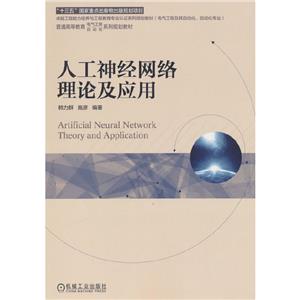
作者:刘洪超
页数:294
出版社:山东大学出版
出版日期:2022
ISBN:9787560775180
电子书格式:pdf/epub/txt
内容简介
基于统计学和机器学习算法,以大规模语料库和知识库为依托,对现代汉语中的体标记和动词情状类型之间的组合规律进行了深度挖掘,最终以层次聚类算法验证并生成了现代汉语情状类型层级体系;以人工神经网络算法实现了对汉语动词情状类型的自动预测;以多元逻辑回归算法实现了对体标记和动词情状类型之间的统计学量化。
作者简介
刘洪超,男,山东滨州人,香港理工大学博士。现为山东大学文学院助理研究员,硕士生导师。主要研究方向为现代汉语句法学、词汇语义学和计算语言学。先后在IEEE ACCESS(SCI)、Journa1of Quantitative Linguistics (SSCI)、 Corpus Linguistics andLinguistic Theory(SSCI)、《云南师范大学学报》(CSSCI)、《中文信息学报》(北大核心,CSCD)等期刊发表论文,并为IEEEACCESS(SCI)和Sage Open(SSCI)的审稿人。
目录
Chapter 1 Introduction
1.1 Definition and Nature
1.2 Research Focuses
1.3 Organization of the Book
Chapter 2 Literature Review
2.1 Studies before Two Components Theory
2.2 Studies after Two Components Theory
Chapter 3 The Classification of Lexical Aspect
3.1 The Prototype Model of Situation Type
3.2 The Construction and Annotation of Situation Type System
3.3 The Annotation of Verbs’ Situation Type
Chapter 4 Statistical Validation of Situation Type System
4.1 Validation of the Whole Classifying Features
4.2 LE1
4.3 LE2 and GUO
4.4 ZHE and ZAI
4.5 ZHENGZAI
4.6 Conclusion
Chapter 5 Evaluation of Mandarin Lexical Situation Type Dataset
5.1 Previous Computational Studies on Aspect
5.2 Vector Space Models
5.3 Classification Based on Selected Vectors
5.4 Classification Based on Word Embedding Vectors
Chapter 6 Conclusion
6.1 The Existence of Lexical Aspect: The Basic Controversial Issue
6.2 Significance of This Book
6.3 Some Limitations and Future Work of This Book
Appendix 1 : POS Tag in Sinica Corpus
Appendix 2 : Collocations of V-ZHE
Appendix 3 :Collocations of ZAI-V
Appendix 4:Collocations of ZHENGZAI-V
Appendix 5 :Collocations of V-LE
Appendix 6 : Collocations of V-GUO
References
Acknowledgements
山东大学中文专刊目录
1.1 Definition and Nature
1.2 Research Focuses
1.3 Organization of the Book
Chapter 2 Literature Review
2.1 Studies before Two Components Theory
2.2 Studies after Two Components Theory
Chapter 3 The Classification of Lexical Aspect
3.1 The Prototype Model of Situation Type
3.2 The Construction and Annotation of Situation Type System
3.3 The Annotation of Verbs’ Situation Type
Chapter 4 Statistical Validation of Situation Type System
4.1 Validation of the Whole Classifying Features
4.2 LE1
4.3 LE2 and GUO
4.4 ZHE and ZAI
4.5 ZHENGZAI
4.6 Conclusion
Chapter 5 Evaluation of Mandarin Lexical Situation Type Dataset
5.1 Previous Computational Studies on Aspect
5.2 Vector Space Models
5.3 Classification Based on Selected Vectors
5.4 Classification Based on Word Embedding Vectors
Chapter 6 Conclusion
6.1 The Existence of Lexical Aspect: The Basic Controversial Issue
6.2 Significance of This Book
6.3 Some Limitations and Future Work of This Book
Appendix 1 : POS Tag in Sinica Corpus
Appendix 2 : Collocations of V-ZHE
Appendix 3 :Collocations of ZAI-V
Appendix 4:Collocations of ZHENGZAI-V
Appendix 5 :Collocations of V-LE
Appendix 6 : Collocations of V-GUO
References
Acknowledgements
山东大学中文专刊目录














